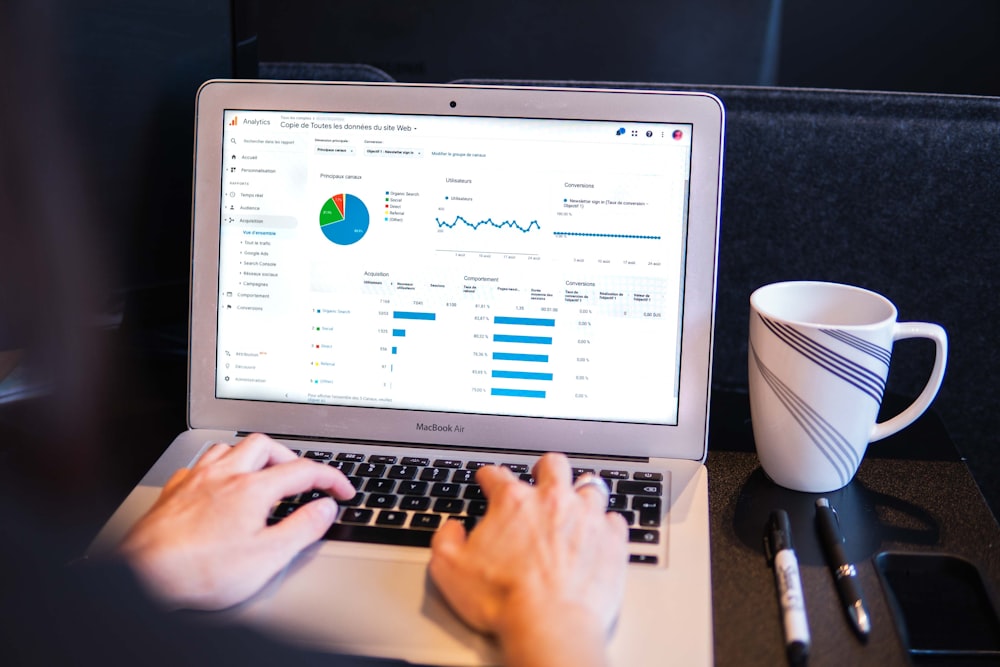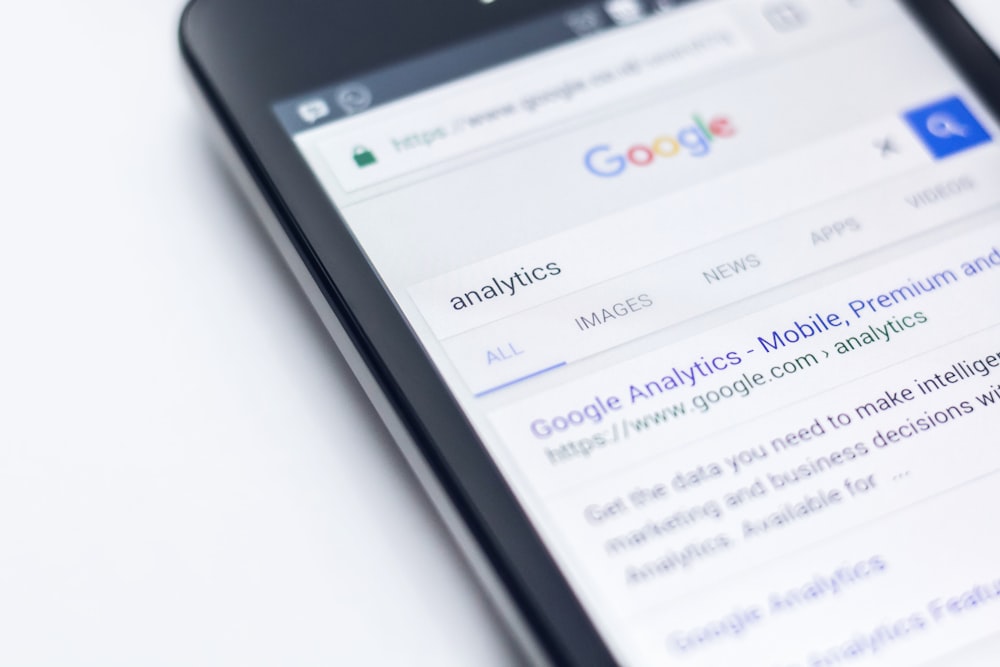In the dynamic world of digital advertising, understanding metrics such as the average cost per click (hereafter referred to as the avg. CPC) is pivotal. This guide aims to delve deep into the concept of avg. CPC, provide insights into its significance, and elucidate the factors influencing it. As a knowledgeable insider in this domain, we strive to enlighten you with the latest trends and developments.
Decoding Average Cost Per Click (Avg. CPC)
The avg. CPC is a measure that reflects the mean expenditure incurred for each click on an advertisement. The avg. CPC is calculated by dividing the total expenditure (for clicks) by the aggregate number of clicks. This metric is fundamental in evaluating the efficacy of advertising campaigns.
To put it simply, the avg. CPC is derived from your actual cost-per-click (actual CPC), which is the real cost you incur for a click on your ad. It is worth noting that your avg. CPC might vary from your maximum cost-per-click (max. CPC), which is the highest cost you are willing to incur for a click.
For instance, if your ad receives two clicks, one costing $0.20 and the other $0.40, your total cost amounts to $0.60. By dividing the total cost ($0.60) by the total number of clicks (2), we derive an avg. CPC of $0.30.
The Significance of Avg. CPC
The average Cost Per Click (Avg. CPC) serves as a critical metric in the realm of digital marketing. It represents the average amount you pay each time a user clicks on one of your ads. This metric isn’t just a number; it’s a reflection of the efficiency and effectiveness of your advertising efforts. By tracking Avg. CPC, advertisers can gauge the financial health of their campaigns and make informed decisions to optimize their advertising strategies.
Role in Budget Management
Avg. CPC is instrumental in managing your marketing budget. It provides a clear picture of how your funds are being utilized and helps in allocating your budget more effectively. Understanding the average rate for clicks within your specific industry or geographical area enables you to set realistic budgeting expectations and ensures that your marketing dollars are spent wisely.
Indicator of Campaign Performance
A lower than average CPC can suggest that your ads are performing well, resulting in cost-effective clicks and better utilization of your budget. However, it’s crucial to balance this with the quality of traffic and conversions; cheaper clicks are not beneficial if they don’t lead to conversions.
Conversely, consistently higher Avg. CPC rates may indicate challenges within your campaigns. This could be due to intense competition for keywords, poor ad relevance, or suboptimal landing page experiences. By monitoring this metric, advertisers can identify areas of improvement, whether it’s enhancing ad creatives, refining target audiences, or adjusting bidding strategies.
Benchmarking and Competitive Analysis
Avg. CPC also serves as a benchmark for performance comparison. By understanding the industry or location average, advertisers can measure how their campaigns stack up against competitors. This insight is invaluable for competitive analysis and strategic planning. If your Avg. CPC is significantly higher than the industry average, it’s a signal to dig deeper into your campaign settings and strategies to identify areas for optimization.
Strategic Adjustments and Improvements
Knowing your Avg. CPC allows for strategic adjustments to improve cost-efficiency. This could involve experimenting with different ad formats, tweaking ad copy, or refining keyword targeting. Small changes can lead to significant improvements in Avg. CPC, enhancing the overall return on investment (ROI) of your campaigns.
In summary, Avg. CPC is more than just a metric; it’s a vital sign of your marketing campaign’s health and efficiency. By understanding and optimizing this figure, advertisers can achieve more with their budgets, improve campaign performance, and gain a competitive edge in the digital marketplace. Remember, a successful advertising strategy is not about spending less but about spending smarter.
Platforms Influencing Avg. CPC
The avg. CPC varies across different advertising platforms. Each platform provides a unique audience and a set of tools to reach them. The dominating forces in the mobile advertising landscape are Google Ads and Facebook Ads. However, Amazon Ads has emerged as a significant player, making it equally important to understand its CPC benchmarks.
Google Ads
Google Ads provides advertisers with access to audiences interacting with Google Search, YouTube, Google Display Network videos, and publishers’ mobile apps. Over the past few years, the avg. CPC for Google Ads has seen fluctuations. For instance, in 2018 and 2019, the CPC rate for Google Ads was in decline, falling from $0.75 in 2018 to $0.69 in 2019. However, in 2020, the year of the global pandemic, the price of a click collapsed to just $0.49 due to a decrease in competition as advertisers pulled their ad budgets in masses. In 2021, as the world began to recover, the avg. CPC for Google Ads bounced back to $0.67, close to the pre-pandemic pricing level.
Facebook Ads
With Facebook Ads, advertisers can reach their target audience via Facebook’s app on desktop and mobile, as well as on Instagram, WhatsApp, and through its Audience Network that serves thousands of app developers with target ads that match their app users’ interests.
The avg. CPC for Facebook Ads has remained reasonably stable over the years, averaging around $1.6 – $1.7 per click across ten verticals, ranging from $2.72 for Employment & Job Training to just $0.45 for Apparel.
Amazon Ads
Amazon Ads is another platform that has seen a considerable increase in its avg. CPC over the years. From $0.56 per click in 2018 to $0.81 in 2019, and finally reaching $1.2 per click in 2021.
Avg. CPC: Variations by Industry and Location
The average cost per click (Avg. CPC) can fluctuate markedly across different industries. This variation is due to the differing levels of competition, customer value, and advertising demand within each sector. For example, industries such as legal services, insurance, and finance often experience the highest CPC rates due to the high value of their customer conversions. In contrast, industries like hospitality, education, and apparel might see lower CPC rates as they face less competition and have lower customer lifetime values.
It’s crucial for advertisers to benchmark their CPC against industry averages to gauge campaign performance accurately. For instance, a CPC of $4 might be considered cost-effective in the legal sector but expensive for the apparel industry. Understanding these nuances enables advertisers to set realistic budgeting expectations and tailor their strategies accordingly.
Location-Based CPC Variations
Geography plays a significant role in determining Avg. CPC rates. Economic factors, market saturation, and local competition all influence how much a click costs in a specific location. As noted, Japan, Canada, and the United States exhibit higher average CPCs due to their developed economies and competitive digital markets.
Conversely, countries with emerging digital markets like Spain, Brazil, and Indonesia typically showcase lower Avg. CPC rates. This discrepancy offers an opportunity for advertisers targeting global audiences to optimize their ad spend by focusing on regions with lower CPCs without sacrificing potential reach and engagement.
However, it’s essential to consider the target audience’s quality and relevance when leveraging geographical differences in CPC rates. Lower costs in certain countries should not lead advertisers to compromise on the strategic alignment between their products or services and the audience needs.
Strategic Implications of CPC Variations
Advertisers need to adapt their bidding strategies and campaign objectives based on the Avg. CPC dynamics of their industry and target locations. For instance, in high-CPC industries or regions, focusing on ad quality, relevance, and conversion optimization becomes even more critical to ensure a favorable return on investment (ROI).
Furthermore, leveraging advanced targeting options, improving ad creatives, and optimizing landing pages can help advertisers achieve better engagement and conversion rates, thus effectively lowering their overall CPC. In addition, exploring alternative advertising platforms with lower competition can also be a strategic move to reduce average CPCs while still reaching relevant audiences.
In conclusion, understanding the variations in Avg. CPC by industry and location is vital for advertisers aiming to optimize their ad spend and achieve better campaign outcomes. By staying informed about these trends and adjusting strategies accordingly, advertisers can enhance their marketing efficiency and drive more value from their campaigns.
Optimizing Campaigns to Lower Avg. CPC
Lowering the average cost per click (Avg. CPC) is crucial for enhancing the efficiency of your advertising budget. Optimizing your campaigns can lead to more clicks for the same spend, increasing the overall effectiveness of your digital marketing efforts.
Keyword Optimization
Keywords are the backbone of PPC campaigns. Selecting the right keywords can significantly impact your Avg. CPC. Focus on long-tail keywords, which are less competitive and more specific, leading to lower costs and higher conversion rates. Regularly review your keyword list, remove underperforming or expensive keywords, and experiment with new combinations to find the most cost-effective options.
Ad Scheduling
Ad scheduling, or dayparting, allows you to run your campaigns at times when your target audience is most active. By analyzing your campaign data, you can identify peak times for user engagement and adjust your ad scheduling accordingly. This ensures that your ads are not running during off-peak hours, reducing wasted spend and potentially lowering your Avg. CPC.
Targeting Adjustments
Refining your targeting can drastically improve campaign performance and lower Avg. CPC. Utilize demographic, geographic, and psychographic data to narrow down your audience to those most likely to convert. Consider excluding locations, age groups, or other demographics that have not performed well in the past. The more targeted your campaigns, the less you’ll typically pay per click.
Ad Copy and Creative Optimization
Your ad copy and creative elements play significant roles in determining your Avg. CPC. Ads that resonate with your target audience and clearly communicate the value proposition are more likely to receive clicks. Test different headlines, descriptions, and call-to-actions to determine what drives the best performance. High-performing ads often enjoy lower CPC rates due to better engagement and relevance scores.
Landing Page Optimization
The effectiveness of your landing page can influence your Avg. CPC. Ensure that your landing page is relevant to your ad content and provides a seamless user experience. Pages that load quickly, are mobile-friendly, and have clear call-to-action (CTA) buttons tend to convert better. Higher conversion rates signal to platforms like Google Ads that your ad is relevant and valuable, which can lead to a lower Avg. CPC.
By implementing these optimization strategies, advertisers can significantly reduce their Avg. CPC while improving the overall performance of their campaigns. Regular monitoring and adjustments based on campaign data are key to maintaining cost-effective advertising efforts. Remember, the goal is not just to lower the Avg. CPC but to do so in a way that maintains or improves the quality of your traffic and the likelihood of conversion.
Impact of Quality Score on Avg. CPC
Quality Score is a metric used by platforms like Google Ads to gauge the relevance and quality of your ads, keywords, and landing pages. It significantly influences your Avg. CPC and overall ad placement. A higher Quality Score means that your ad is more relevant to the user’s needs, leading to lower costs and better ad positions.
Components of Quality Score
Quality Score is primarily determined by three factors:
- Ad Relevance: How closely your ad aligns with the searcher’s intent. Ensuring that your ad text is closely related to your chosen keywords improves relevance.
- Landing Page Experience: The usefulness and relevance of your landing page to the ad and the search query. A well-designed, relevant landing page enhances user experience and increases conversions.
- Click-Through Rate (CTR): The ratio of clicks your ad receives compared to the number of times it’s shown. A high CTR indicates that users find your ad relevant and useful.
Improving Quality Score for Lower Avg. CPC
- Enhance Ad Relevance: Tailor your ad copy to closely match your target keywords. Group similar keywords into tight ad groups to maintain high relevance across your campaigns.
- Optimize Landing Pages: Ensure that your landing pages provide value and directly relate to your ad copy and keywords. Fast loading times, mobile responsiveness, and clear call-to-actions contribute to a better landing page experience.
- Increase CTR: Write compelling ad copy that speaks directly to the needs and interests of your target audience. Use strong call-to-actions and test different ad variations to find the most engaging content.
Monitoring and Adjusting for Quality Score
Regularly monitor your Quality Score and make adjustments as needed. Google provides ratings for each component of the Quality Score, allowing you to pinpoint areas for improvement. Small, continuous improvements in these areas can lead to a significant reduction in Avg. CPC over time.
Understanding and improving your Quality Score is essential for reducing your Avg. CPC and making your ad campaigns more cost-effective. By focusing on ad relevance, landing page quality, and CTR, you can improve your Quality Score, leading to lower costs and better ad placements. Remember, maintaining a high Quality Score is an ongoing process that requires regular attention and optimization.
Final Words
Average Cost Per Click (Avg. CPC) is not just a metric; it’s a compass that guides digital marketers and advertisers through the complexities of online advertising. It serves as a critical indicator of campaign efficiency, enabling marketers to assess whether their advertising spend is yielding the desired results. By understanding and analyzing Avg. CPC, advertisers can refine their strategies, adjust their bids, and enhance the overall performance of their campaigns.
Strategic Importance of Avg. CPC Insights
In the dynamic world of digital marketing, having a deep understanding of Avg. CPC across various platforms and sectors allows advertisers to allocate their budgets more effectively. This understanding ensures that every dollar spent is an investment toward reaching the right audience at the right cost. Moreover, by recognizing the nuances of Avg. CPC in different contexts, advertisers can avoid common pitfalls such as overspending in highly competitive markets or underutilizing opportunities in less saturated regions.
Making Informed Decisions for Improved ROI
Knowledge of Avg. CPC empowers advertisers to make informed decisions that drive better outcomes. Whether it’s adjusting campaign targets, refining ad creatives, or exploring new advertising platforms, the insights gained from Avg. CPC analysis are invaluable. They enable advertisers to craft more targeted, relevant, and cost-effective campaigns that resonate with their intended audience.
Staying Ahead in the Digital Advertising Game
The landscape of digital advertising is continually evolving, with new trends, technologies, and consumer behaviors emerging regularly. Staying updated with the latest Avg. CPC trends and understanding their implications is essential for advertisers aiming to stay ahead in the game. Continuous learning, testing, and adapting are key to leveraging Avg. CPC effectively and ensuring sustained success in digital advertising campaigns.
Conclusion: The Path to Advertising Success
In conclusion, Avg. CPC is a pivotal metric that shapes the strategies and successes of digital advertising efforts. By delving deep into this measure and its variations, advertisers can unlock new levels of campaign optimization and efficiency. Embrace the insights provided by Avg. CPC, and use them to steer your advertising campaigns toward greater visibility, engagement, and profitability. Remember, in the fast-paced world of digital marketing, knowledge is power, and understanding Avg. CPC is the first step towards achieving advertising excellence.
FAQ: Understanding Cost Per Click (CPC)
What is a good average cost per click?
A good average cost per click (CPC) varies significantly across different industries, platforms, and target audiences. Generally, a CPC under $2 is considered efficient, but it’s essential to compare this within the context of your specific industry and the average ROI of your campaigns. For more accurate benchmarks, refer to industry-specific CPC averages.
What is the average CPC in the US?
The average CPC in the US also fluctuates based on industry, ad platform, and competition. For example, Google Ads can have an average CPC ranging from $1 to $2 for the Display Network and $1 to $6 for the Search Network. However, highly competitive industries like legal services can see much higher averages.
How do you calculate the average cost per click?
The average cost per click is calculated by dividing the total cost of your clicks by the total number of clicks. For example, if you spent $100 on your campaign and received 50 clicks, your average CPC would be $2.00.
What is the actual cost per click?
The actual cost per click is the amount you pay each time a user clicks on your ad. This can vary from one click to another based on factors such as competition, ad quality, and the maximum bid you’ve set for your campaign.
Is cost per click profitable?
CPC can be profitable if the cost of clicks is lower than the profit margin per conversion. To ensure profitability, focus on optimizing your ads for high-quality clicks that are likely to convert, and continually monitor your campaigns to adjust bids, targeting, and ad content as needed.
Is a 3% click rate good?
A 3% click-through rate (CTR) is generally considered good, but this can vary widely by industry and platform. For context, the average CTR for Google Ads across all industries is about 2%. Evaluate your CTR in relation to your industry average and campaign objectives.
Why is my average CPC so high?
High average CPC can result from several factors, such as bidding for highly competitive keywords, poor ad relevance, or suboptimal ad targeting. To reduce CPC, consider refining your keyword strategy, improving ad copy and quality, and using targeted ad placements.
How much should I charge for CPC?
If you’re a publisher or hosting ads, what you charge for CPC depends on your site’s traffic quality, industry, and audience engagement. Research industry standards and competitors to set a competitive CPC rate. For advertisers, decide your CPC bid based on your campaign budget, target ROI, and the average CPC for your industry and keywords.
Is CPC more expensive than CPM?
Whether CPC is more expensive than cost per thousand impressions (CPM) depends on your campaign’s performance and objectives. CPC is generally more cost-effective for driving direct responses or sales, while CPM can be more efficient for building brand awareness and visibility. The best choice depends on your specific advertising goals and how your audience interacts with your ads.
Featured Image Credit: Photo by Firmbee.com; Unsplash – Thank you!
















